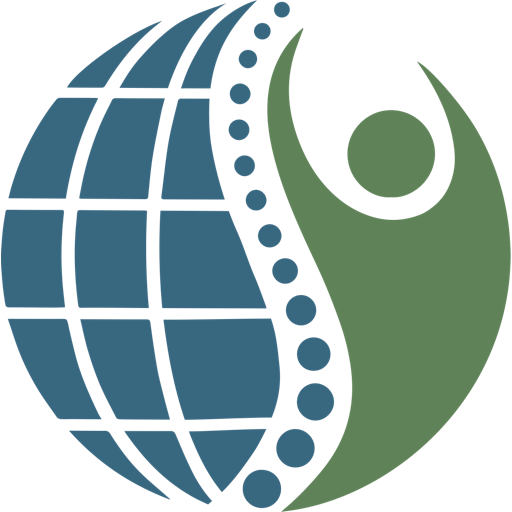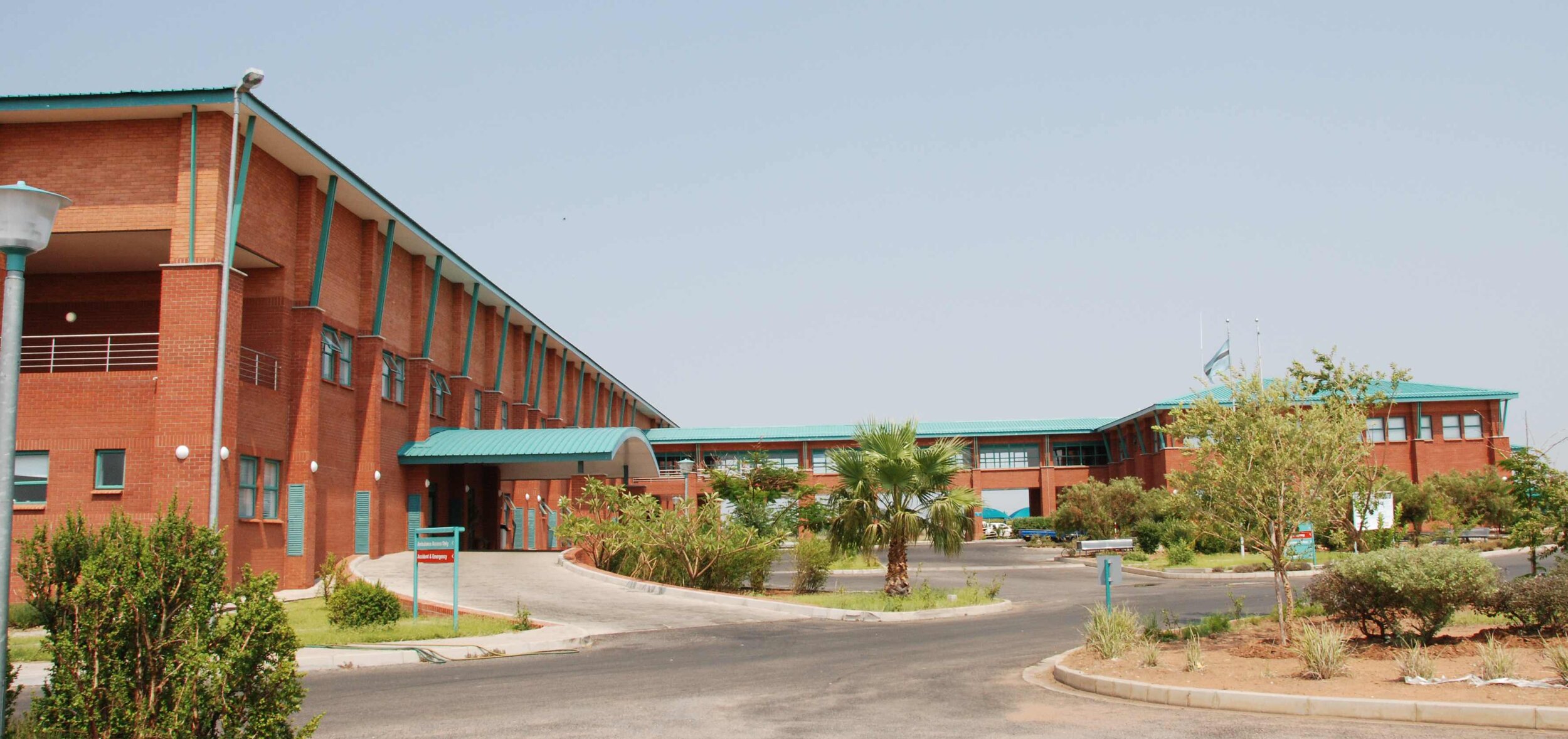Mahalapye – a rapid immersion into World Spine Care
Posted on January 31, 2015 by Richard Brown (spinaluniverse.org)
Mahalapye is Botswana’s tenth-largest town. Sitting directly on the Tropic of Capricorn on the edge of the Kalahari desert, its 41,000 inhabitants enjoy a subtropical climate with long periods of sunshine interrupted only by a brief rainy season. Arriving in this southern African paradise, it was difficult to imagine how cloudless skies and the benevolence of what appeared to be an ever-present sun could be broken by inclement weather. Here I was, well over five thousand miles from the icy blasts and disruptive flurries of snow sweeping across the United Kingdom. I was destined for a month of unbroken heat and was confident of a climate that would quickly transform me into a bronzed Adonis.
Mahalapye District Hospital, home to one of the Botswana WSC clinics.
There was no time to waste in getting started with World Spine Care. Waking to the early morning sun beaming through the windows, we enjoyed a hasty al fresco breakfast before donning our natty WSC shirts before firing up the Prado and joining the Mahalapye rush hour to head to the outskirts of the town. To say “rush hour” is something of an overstatement. Firstly, no one seems to be rushing and secondly, I doubt whether it lasts an hour. It pays to get up early in Botswana. Once the temperature rises to its scorching maximum in the afternoon, even for the locals it becomes a trifle too warm. The smartest people, therefore, get up with the larks and make the most of the cooler start to the day.
Our early morning drive to the hospital took us past children happily skipping their way to school, mothers strolling to town with their babies strapped to their backs, and aging flatbed trucks carrying gangs of smiling laborers trundling slowly along the dusty highway. Whether powered or not, the pace was, most definitely, pedestrian.
Officially opened in 2008, Mahalapye District Hospital proudly stands as a monument to the Botswanan Government’s program of bringing specialist medical services to the community. With its contemporary red brick construction, topped with roofs of green tiles, it looked every inch the modern healthcare facility as we passed under the Stop barrier that had been raised for our arrival. World Spine Care has its own dedicated rooms within the physical therapies department. With two sizable treatment rooms, an admin office, and a waiting area, it is well-equipped and sports two state-of-the-art Elite chiropractic tables.
Seeing it, my modest expectations were very hastily exceeded. As I tentatively explored my new environment I became aware that the waiting area was rapidly filling up with a steady stream of patients. Mostly women, they were immaculately dressed in a myriad of colors and sported a selection of hats that wouldn’t have looked out of place at Ascot. As they settled themselves into their seats, the chatter of Setswana quickly filled the air.
One of the luxuries of WSC is that we have dedicated healthcare assistants provided by the Ministry of Health. Doubling up as translators, the female duo of Marcia and Malebogo were on hand to attend to our every need: directing patients, scheduling appointments, administering data questionnaires, and keeping the atmosphere positive and upbeat as Geoff and I worked through our respective lists.
As well as providing treatment to under-served communities, World Spine Care also collects and collates valuable patient data. Meticulously designed, the WSC protocols ensure that high-quality primary spine care is delivered to all patients and regular questionnaires measure outcomes and produce valuable statistics. Sessions of care at WSC are therefore not simply about providing treatment but also involve gathering a huge amount of information about patients in its four global locations.
The Batswana, as they’re known, are wonderful people. Ready smiles are accompanied by hearty greetings, meaning that meeting each one on that first morning in Mahalapye was a real delight. All came in clutching their medical life histories in the form of a glorified exercise book into which blood test results, x-ray reports, and every other bit of medical paperwork had been stapled. Each book was as unique as its owners; covers were adorned with everything from the Spice Girls to sports cars and memories quickly returned of carefully covering our precious school books to protect them from splashes, scratches, and scrapes.
As I tried quickly get up to speed, aided by WSC Clinic Co-ordinator Geoff Outerbridge, Marcia, and Malebogo, I was gripped by the realities of healthcare in Africa. The succession of patients taking anti-retroviral drugs reflected the extent of HIV across the continent, while the wearing of red and white loom-like waistbands signified the persistence of traditional belief systems. Some had traveled three hours to get to the clinic for treatment, getting up at 5 am to make a long hot journey to and from the clinic in order to receive the spine care on offer.
As for that brief rainy season? Leaving the clinic on my first day, small droplets of rain began to fall. Those small droplets quickly became huge globules and within five minutes the heavens had opened. A terrific thunderstorm followed, instantly creating small rivers, obliterating visibility, and slowing traffic to less than walking pace. Dashing to the local store got us soaked and it was not long before the power failed and we were plunged into paralyzing darkness.
Somehow, however, none of this mattered. Who cares if it rains? The local farmers certainly welcomed it and experiencing such terrific downpours is all part of being in Africa. The bronzing of my ample frame can wait until another day. Already, this is proving an unforgettable experience. As we head to the rural Shoshong village later in the week, I anticipate being further humbled by the resilience and fortitude of those for whom life is so very different from my own.
It is a privilege to be here in Botswana.


